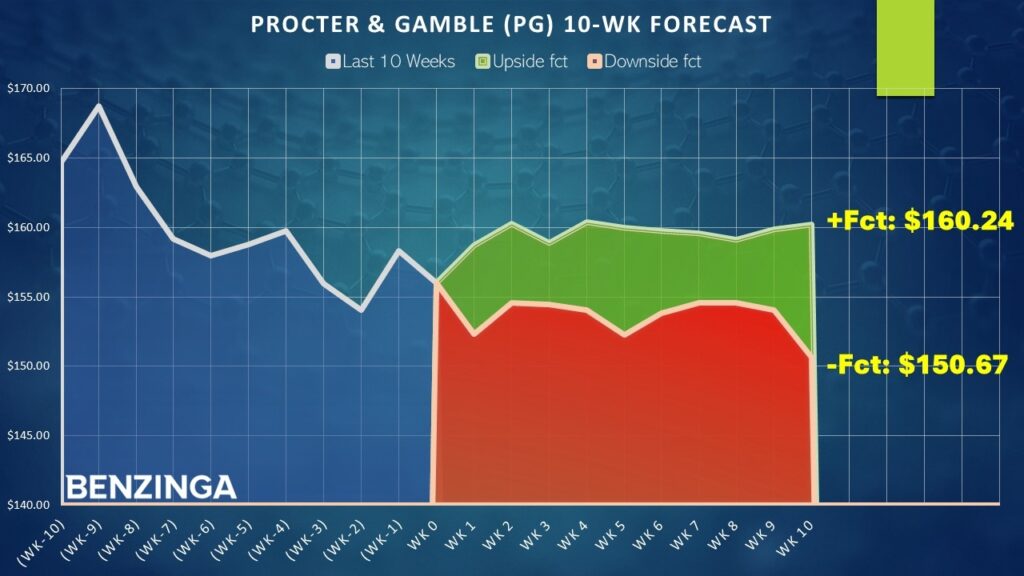
Even with a strong earnings report, concerns over the economic impact of the Trump administration's tariffs continue to impose an overhang over publicly traded enterprises. Consumer goods giant The Procter & Gamble Company (NYSE:PG) found that out the hard way. Although the company managed to beat analysts' expectations, management disclosed its anticipated financial impact from the levies. While the announcement sent PG stock down on Tuesday, the red ink could be a discount.
On paper, circumstances appeared auspicious. The manufacturer of popular brands such as Gillette, Tide, Pampers and Crest reported fiscal fourth-quarter adjusted earnings per share of $1.48, beating analysts' consensus estimate of $1.42. On the top line, P&G generated sales of $20.889 billion, representing a 2% lift on a year-over-year basis and exceeding Wall Street's view of $20.765 billion.
In addition, organic sales grew across all segments. In particular, Beauty, Grooming, Fabric & Home Care, and Baby, Feminine & Family Care each increased by 1% and Health Care rose by 2% against the year-ago period. It's also worth pointing out that operating margin jumped 190 basis points to 20.8% in the fourth quarter.
Despite the positive print, P&G couldn't escape from the Trump tariff drama. For fiscal 2026, management guided adjusted EPS to a range between $6.83 and $7.09. However, analysts pegged a consensus view of $6.99. With the market not a fan of uncertainty, PG stock dropped following the earnings results.
What appears to be the most troublesome component is that P&G's outlook includes around $1 billion before-tax, or approximately $800 million after-tax, in higher costs from tariffs. Still, that might not be enough reason to give up on PG stock.
During a media call, CFO Andre Schulten admitted that some of the costs will be passed onto the consumer in the form of price hikes. But Schulten also stated that most of the tariff hit could be offset through productivity or sourcing changes. Given that the company delivered an earnings beat despite challenges, the performance lends credibility to the statement.
Also, while total consumption in China is down approximately 2% compared to the year-ago level, Schulten said that P&G's business unit in the world's second-largest economy grew 2% in terms of organic sales during the quarter. That indicates international resilience, which should be net favorable for PG stock in the long run.
Making A Quantitative Case For PG Stock Options
Part of what makes the volatility in PG stock intriguing is the underlying business. Essentially, the company sells products that we all use every day. Many of us have grown accustomed to the brands and buy them out of either loyalty or habit. Therefore, with PG stumbling, it presents an attractive contrarian opportunity. However, the upside in the consumer goods space is limited, which is where the leverage of options comes in.
Even so, options are a tricky beast because of their multi-dimensional nature. With certain strategies, it's not just about the magnitude and time components, which are already difficult enough to forecast; rather, it's also important not to be too conservative lest you incur an opportunity cost. In my opinion, options traders require a new framework beyond just interpreting financial statements and chart patterns.
Specifically, we need to understand the market's sentiment voting record for PG stock. By knowing how the market votes, we can better predict where PG may end up in the future. With that said, the objective reality in the past 10 weeks is that the market voted to be a net buyer four times and a net seller six times. During this period, PG incurred a downward trajectory. For brevity, we can summarize this sequence as "4-6-D."
At first, it may sound strange to compress P&G's price action into a simple binary code. But what we have done here is to categorize PG's behavioral profile as a distinct, falsifiable pattern. By conducting this exercise across rolling 10-week intervals (going back to January 2019), we can extract the following demand profile breakdown:
| L10 Category | Sample Size | Up Probability | Baseline Probability | Median Return if Up |
| 2-8-D | 6 | 66.67% | 56.56% | 1.09% |
| 3-7-D | 15 | 46.67% | 56.56% | 1.89% |
| 4-6-D | 33 | 66.67% | 56.56% | 1.76% |
| 4-6-U | 13 | 46.15% | 56.56% | 1.35% |
| 5-5-D | 44 | 63.64% | 56.56% | 1.48% |
| 5-5-U | 26 | 53.85% | 56.56% | 0.84% |
| 6-4-D | 16 | 68.75% | 56.56% | 1.35% |
| 6-4-U | 66 | 56.06% | 56.56% | 1.19% |
| 7-3-D | 3 | 66.67% | 56.56% | 1.48% |
| 7-3-U | 58 | 55.17% | 56.56% | 1.36% |
| 8-2-U | 25 | 48.00% | 56.56% | 1.53% |
| 9-1-U | 6 | 33.33% | 56.56% | 0.79% |
Empirically, we have no incentive to go long on PG stock if the expected one-week probability of upside is less than the baseline, which stands at 56.56%. This is effectively our null hypothesis, the expected success rate assuming no mispricing. In contrast, our alternative hypothesis is that, because the 4-6-D sequence is flashing, the upside probability is around 67%.

Assuming the positive pathway, the expected median return is 1.76%. Should the bulls manage to maintain control for a second week, the expected performance boost is close to an additional 1%. Assuming that PG stock can close this Friday around $156, the market could attempt to drive the price toward $160 by mid-August.
An Intriguing Setup For Aggressive Speculators
Based on the market intelligence above, speculators may consider the 155/160 bull call spread expiring Aug. 15. This transaction involves buying the $155 call and simultaneously selling the $160 call, for a net debit paid of $214 (the most that can be lost in the trade). Should PG stock rise through the short strike price ($160) at expiration, the maximum reward is $286, a payout of roughly 134%.
Frankly, this is a risky wager because the spread has very limited intrinsic value. Further, the breakeven price is at $157.14, thus featuring a narrow window of profitability. That said, if the implications of the 4-6-D sequence hold, PG stock should have enough firepower to trigger the short strike price at expiration.
Naturally, this raises the question about the reliability of the aforementioned sequence. Running a one-tailed binomial test reveals a p-value of 0.1244, which means that there's a 12.44% chance that the signal is random rather than "intentional." While this doesn't meet the threshold of statistical significance, in my opinion, the signal is empirically interesting given the market's open system and highly entropic nature.
With P&G delivering a strong earnings report despite broader headwinds, PG stock is arguably a discount you can have confidence in.
The opinions and views expressed in this content are those of the individual author and do not necessarily reflect the views of Benzinga. Benzinga is not responsible for the accuracy or reliability of any information provided herein. This content is for informational purposes only and should not be misconstrued as investment advice or a recommendation to buy or sell any security. Readers are asked not to rely on the opinions or information herein, and encouraged to do their own due diligence before making investing decisions.
Read More:
Photo: Shutterstock







